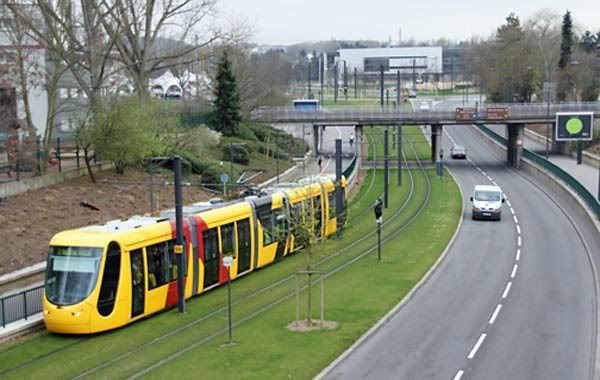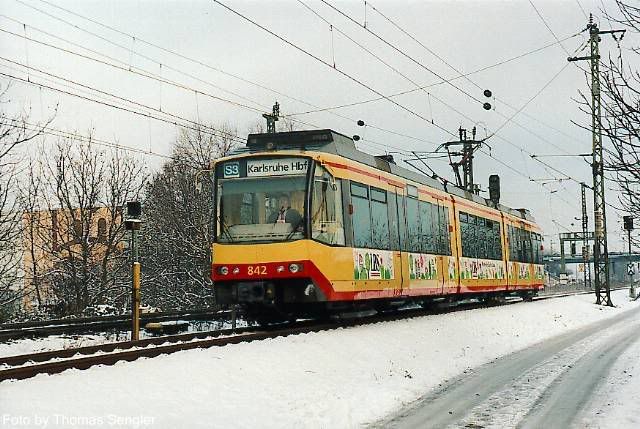(noon. – promoted by ek hornbeck)
Burning the Midnight Oil for Living Energy Independence
 What is the CEI? It is the “Cost Effectiveness Index”, used to evaluate applications for capital improvements in transit. As described by Yonah Freemark at The Transport Politic:
What is the CEI? It is the “Cost Effectiveness Index”, used to evaluate applications for capital improvements in transit. As described by Yonah Freemark at The Transport Politic:
In reviewing transit capital projects to fund with New Starts grant money, the Federal Transit Administration evaluates proposals from a variety of perspectives. Since 2005, it has placed an overwhelming focus on one criterion, requiring a medium “cost-effectiveness” rating, which values predicted overall travel time saved by commuters likely to use the new service.
… but there’s a problem with that.
And indeed, it is a puzzle from The Transport Politic which brings this issue back to the fore: a little while back, Yonah described how the CEI was forcing an inferior light rail alignment choice, in Minneapolis, while in the article linked to above, he is arguing against a proposal by two Congressmen to overturn the policy.
The thing is: the Cost Effectiveness Index is not simply a badly put together formula. Rather, it represents a fundamentally flawed assumption under which there is no way to put together an appropriate formula.
So fixing the CEI is not really a matter of finding a better formula: its a matter of overcoming the basic limitation in any index-based decision.
The Specific Problem with the CEI
The Specific Critique of the CEI is presented quite well by Yonah Freemark back in August:
One, the cost-benefit analysis is heavily biased towards the number of annual hours commuters will save by using the new transit system. This means that people who already have longer commutes are seen as more valuable for the FTA than those who choose to live in in-town locations with shorter distances between their residences and workplaces. As a result, transit networks are encouraged to extend out into the suburbs, rather than be densified and reinforced downtown. This policy encourages sprawl; though more suburbanites may find themselves taking transit to work, they won’t be using it to go shopping or out on the weekend. European policies, which generally encourage densification of transit networks in dense, inner-city locations, have produced transit systems that are far better-used per mile compared to American lines.
Two, similarly, the FTA likes speed. As a result, the slightly shorter 3A route is better for commuters in the far-out suburbs hoping to get to jobs downtown. The tunnel planned for route 3C, which ramps up costs exponentially, is only necessary because a surface route would be too slow and make the commutes of people from Eden Prairie slightly longer. Note that a 3C route without the tunnel would have a significantly lower construction cost, but it still wouldn’t meet FTA cost-effectiveness criteria because fewer outer-suburban people would ride it because their trip would be longer.
Three, the formula used by the FTA prefers new riders to old ones. In other words, a person moving from a car to a train is considered more important than a person moving from a bus to a train. This means that people already using transit are disadvantaged and are unlikely to receive upgrades to their transit service. Circuitously, the fact that fewer people use transit in the areas along route 3A (because of their wealth, car-dependence, and sprawling neighborhoods) means that they’re more likely to be considered for funding by the federal government.
Well, so fix it! The problem is, when you start digging into it, each modification has a strong counter-argument. Indeed, is it wrong to give credit to a line for better speed? Is it wrong to give extra credit to a line for attracting new riders? Indeed, it is wrong to give credit to a line for saving more hours to commuters rather than saving fewer hours?
If you step back and look at each of those in isolation, they are quite defensible. The central question is: how can you give weight to those factors while still allowing a local alignment to be designed that best meets local needs, where those generally good things may not be as high a priority as running the alignment through an attractive non-commute destination to provide stronger off-peak ridership.
The General Problem With the Cost Effectiveness Index
 Its easy to so got lost in the details of the debate over the details of what is in the CEI that we lose sight of a more basic question: is any single index number going to be right for identifying all of the most worthwhile projects?
Its easy to so got lost in the details of the debate over the details of what is in the CEI that we lose sight of a more basic question: is any single index number going to be right for identifying all of the most worthwhile projects?
And the answer to the basic question is: of course not. A new transit project is an addition to an existing transport system, which is a structured collection of component parts. And that transport system is a subsystem in the local economic system.
There is no conceivable way to formulate any index that will pick the best new transit project for every different transport system in every different local economy in the country. If it picks the best alignment for Minneapolis, it will go awry somewhere else. The actual weight of the different facets of new transport infrastructure depends on the system in which it is to be placed.
But why would anybody imagine that there is a single index number that can pick out “the” right projects? Well, its not a surprising assumption in mainstream economics, which relies upon the fiction of “utility” based decision making, because it allows us to quite accurate in our predictions of what would happen in an entirely different universe where the people in the economy were not human beings.
But its a silly thing to just assume that such a surprising thing is possible in this case. So unless and until someone does present the formula which is accepted by all observers as picking out the very best projects in each of the various big cities, small cities, suburbs and rural areas of this country, there’s no reason to believe there is any one index number that gets it right more often than not.
A Particular Solution to Fixing It
 The reason that some bureaucrat was told, “make up an index number” was an effort to provide a means for selecting projects that was not entirely based on political clout. But when we accept that no one number can be all things to all people, that does not mean we have to throw out the baby with the bathwater.
The reason that some bureaucrat was told, “make up an index number” was an effort to provide a means for selecting projects that was not entirely based on political clout. But when we accept that no one number can be all things to all people, that does not mean we have to throw out the baby with the bathwater.
Say that we want to encourage construction of systems that save energy. And we want to encourage construction of systems that reduce emissions of CO2. And we want to encourage construction of systems that provide alternatives to suburban automotive commutes. And we want to encourage construction of systems that attract people to make a large number of rides. And we want to encourage construction of systems that promote economic development in disadvantaged neighborhoods.
Once we abandon the effort to build a single index number, we actually simplify the formula making process. For energy efficiency, use energy saved per dollar. For reducing CO2 emissions, tons of CO2 emissions saved per dollar. For suburban commutes, peak-hour passenger miles per dollar. For attracting a large number of ride, rides per dollar. There could be six to eight different “good things”.
Then, instead of putting all these quite distinctive goals into some arbitrary index, rank the applicants against each goal. For each goal, provide a certain pot of money to distribute and a maximum percentage of the system cost it can contribute. For example, energy saving can contribute 30%, CO2 emissions reduction 30%, suburban commutes 20%, ridership 20%, supporting economic development in (some already Federally designated) disadvantage neighborhood 20%.
Each system can obtain up to 80% of its cost – depending on how it ranks on a range of measures. However, unlike the existing CEI formula or any alternative CEI index, which is biased toward some particular type of system which is most useful to some particular type of local economy … local communities can look at the range of goals being funded, and design a system that does an excellent job in serving some of those goals.
And ranking applications on each goal is a self-balancing system. If some goals are being less well served … there is an extra incentive to try to do a better job of serving that goal, in order to win that slice of funding.
So, that fixes it, does it?
Of course, this is just one part of the problem. The bigger task might seem to be getting an adequate amount of money allocated to these projects in the first place.
Still, first things first. The system of ranking against distinct goals and allocating funding “slices” is one where it is far easier to ensure a wider range of communities will benefit from access to a larger pool of money. And that is critical to making sure that the benefits both cross urban/rural divides, but, sometimes even more critically, are seen to cross urban/rural divides.
If we are going to get the level of investment in sustainable transport that our nation will be needing in the two decades ahead – it cannot be seen as a “cities only” issue.
And so its an important innovation if we can break the funding regime free of the shackles of the “one size fits all” Cost Effectiveness Index.
And now, the headline act, Midnight Oil, with Dreamworld

3 comments
Author